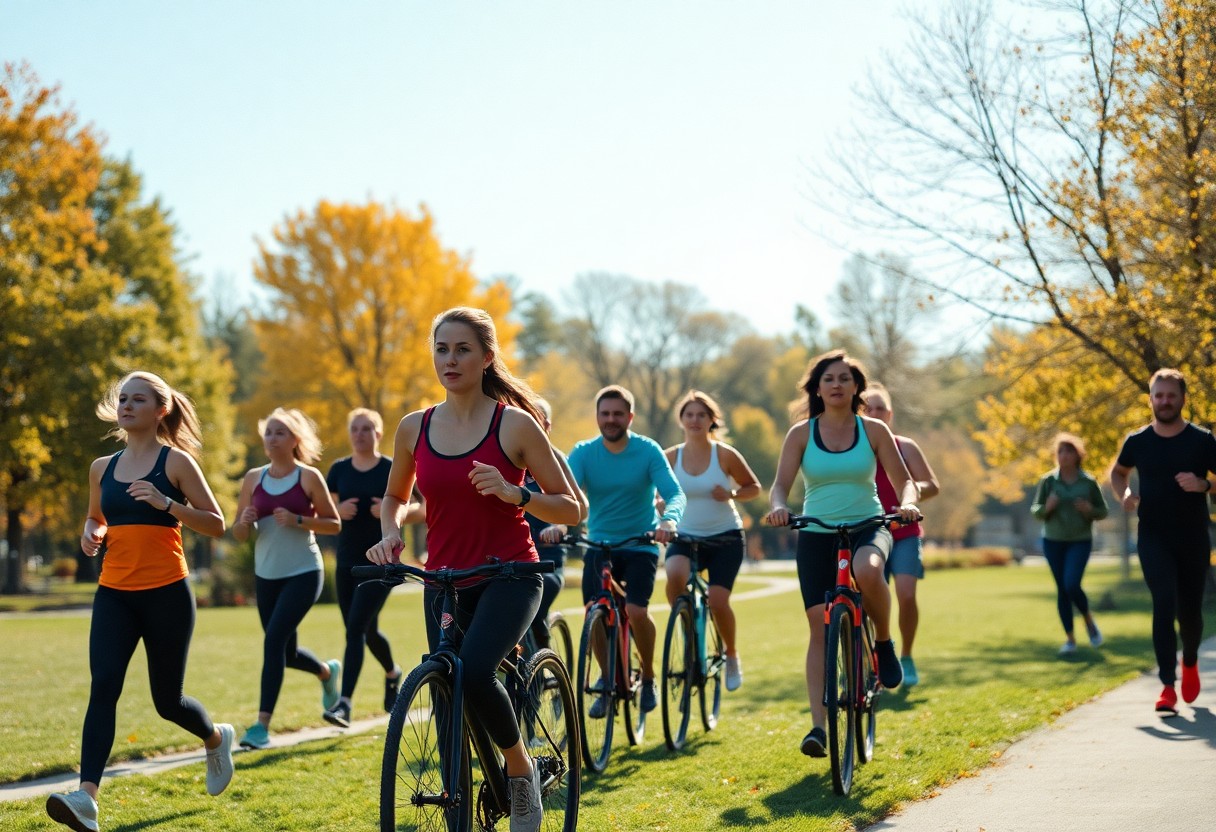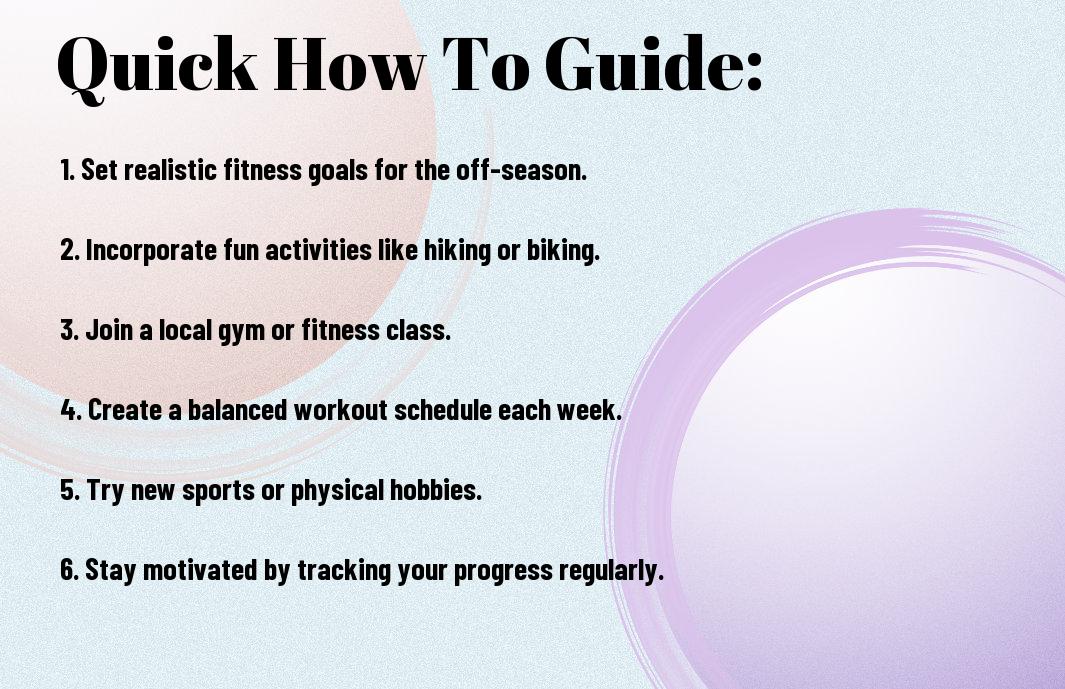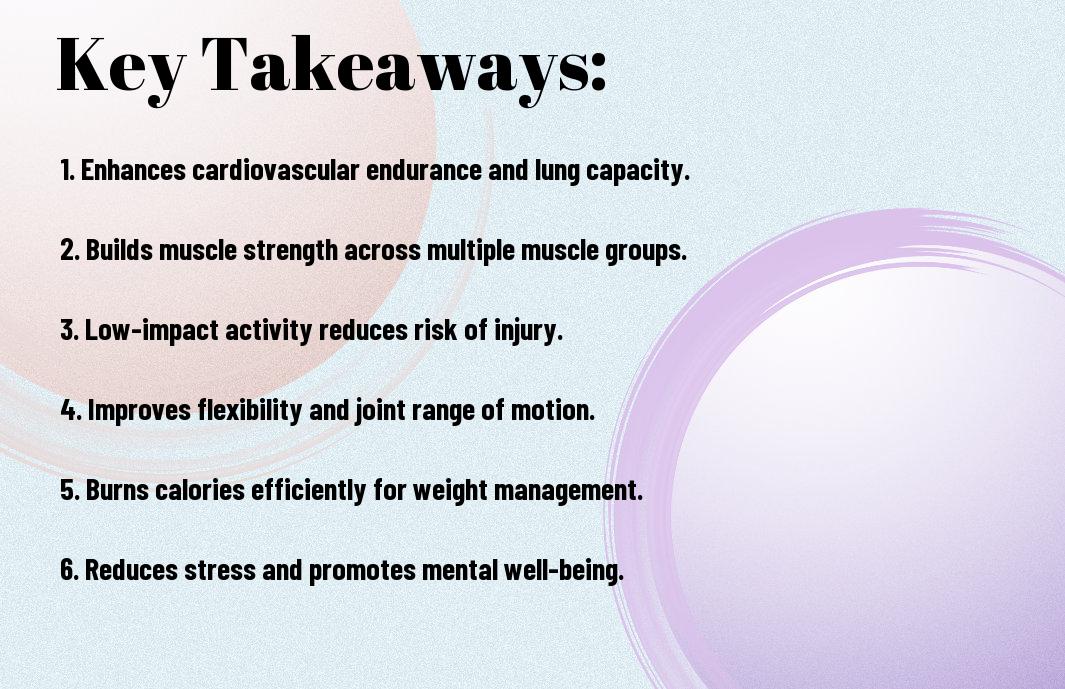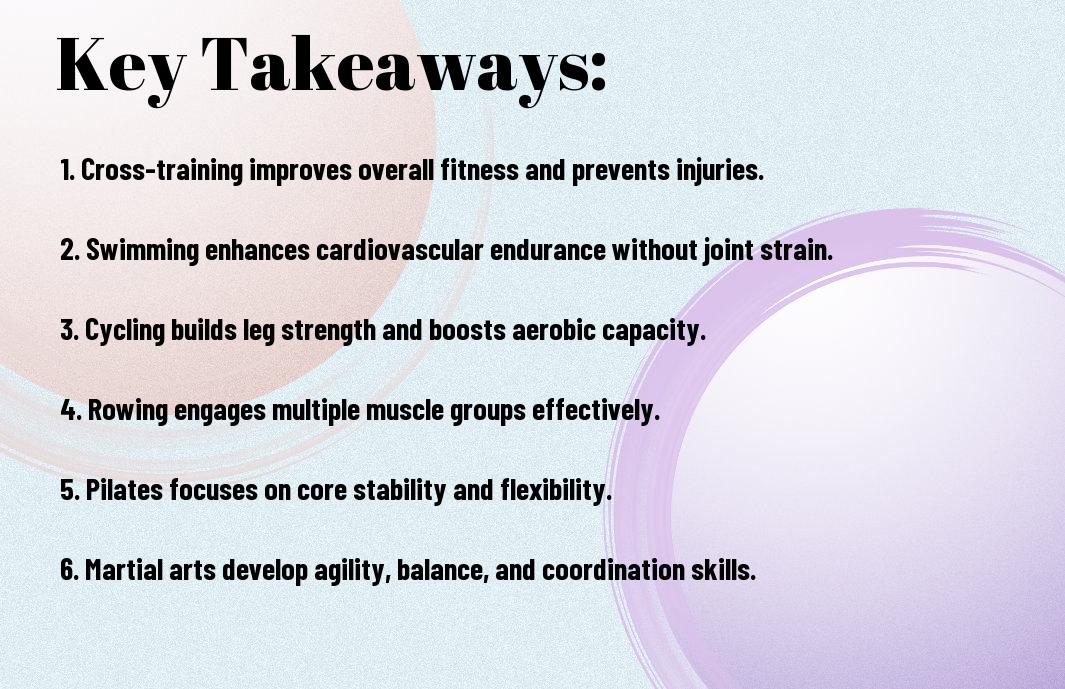Fitness is not just about hitting the gym; it’s about finding activities that you enjoy and that can help you shed pounds effectively. Whether you’re a seasoned athlete or just starting your journey, incorporating sports into your routine can significantly enhance your weight loss efforts. In this post, we will explore the top five sports that will get your heart pumping, burn calories, and ultimately aid in your quest for a healthier body. Get ready to discover how you can achieve your weight loss goals through enjoyable physical activity!
Key Takeaways:
- Running: An effective calorie-burning activity that enhances cardiovascular health and builds endurance.
- Cycling: Great for building leg muscles and improving fitness levels while being low-impact on joints.
- Swimming: A full-body workout that stimulates multiple muscle groups while being gentle on the body.
- Rowing: Combines strength and cardio training, engaging both the upper and lower body for maximum calorie burn.
- High-Intensity Interval Training (HIIT): A time-efficient workout method that combines short bursts of high effort with recovery periods, increasing metabolism post-exercise.
Understanding Weight Loss and Exercise
As you begin on your weight loss journey, understanding the relationship between exercise and weight loss is vital. Engaging in physical activity not only helps you burn calories but also boosts your metabolism, supports muscle growth, and enhances overall well-being. Combining exercise with a balanced diet creates a sustainable approach to achieve and maintain your weight loss goals.
The Science Behind Weight Loss
Around the world, the fundamental principle of weight loss remains consistent: to lose weight, you must create a calorie deficit. This means that you need to burn more calories than you consume. When your body operates in a calorie deficit, it taps into stored fat for energy, leading to weight reduction over time.
Importance of Physical Activity
With regular physical activity, you enhance your weight loss efforts by increasing the number of calories you burn daily. Not only does exercise help you shed pounds, but it also serves to strengthen your cardiovascular system, improve your mood, and boost your energy levels. Incorporating various forms of physical activity into your routine can also make the process enjoyable and engaging.
Science shows that individuals who engage in regular exercise are more successful in their weight loss journeys compared to those who rely solely on diet. Physical activity helps to maintain muscle mass while losing fat, ensuring your metabolism remains efficient. Additionally, exercise has significant mental health benefits, reducing stress and improving your overall outlook, which can positively influence your weight management efforts.
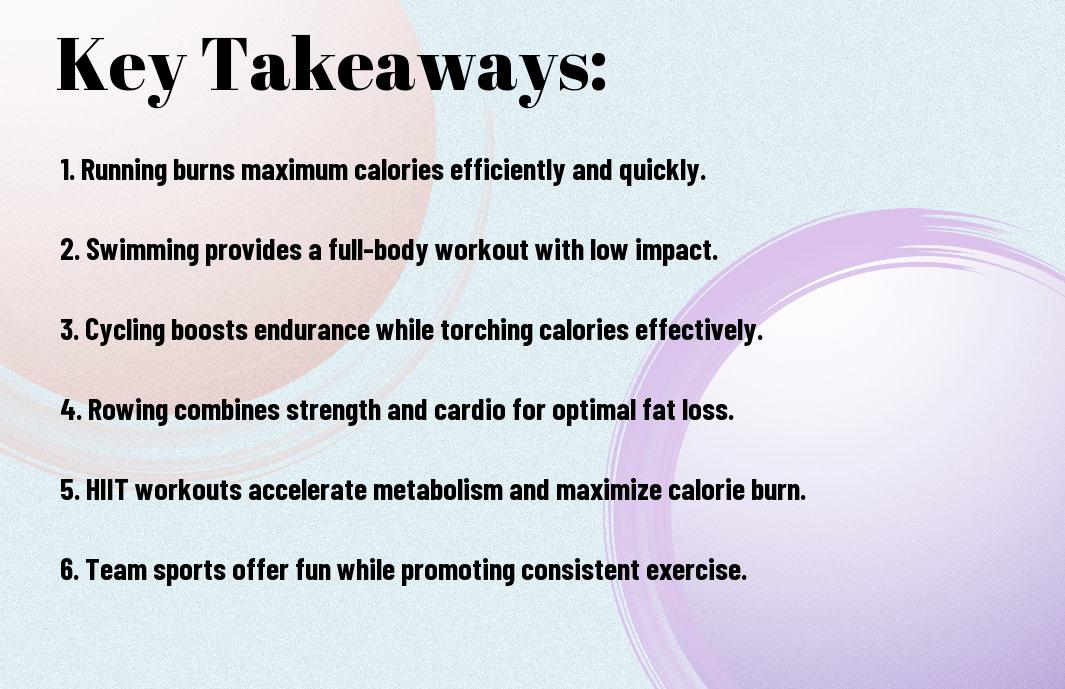
The Top 5 Sports for Weight Loss
Assuming you are looking for effective ways to shed those extra pounds, engaging in specific sports can significantly enhance your weight loss journey. These activities not only burn calories but also boost your overall fitness and well-being. In this section, you will discover the top five sports that can help you achieve your weight loss goals while keeping the experience enjoyable and motivating.
Running
Below is one of the most straightforward and effective sports for weight loss. Running elevates your heart rate and can burn many calories in a short amount of time, making it an ideal choice for anyone seeking to lose weight. Whether you’re jogging in the park or sprinting on a treadmill, running can fit easily into your schedule.
Cycling
One of the most popular activities, cycling not only promotes cardiovascular health but also helps you torch calories effectively. You can cycle outdoors on scenic trails or indoors on stationary bikes, allowing for versatile options based on your preferences and circumstances.
Plus, cycling is low-impact, reducing stress on your joints, making it suitable for individuals of all fitness levels. You can vary the intensity and duration to adapt the workout to your specific goals, whether you’re aiming for a leisurely ride or an intense cycling session.
Swimming
Against common misconceptions, swimming is an excellent sport for weight loss. The resistance of water makes your body work harder, enhancing calorie burn while providing a full-body workout. Whether you prefer freestyle, breaststroke, or water aerobics, swimming can adapt to your fitness level.
Swimming burns calories effectively and minimizes the risk of injury. This low-impact activity is particularly beneficial for those recovering from injuries or managing chronic pain, allowing you to work out without straining your body.
HIIT (High-Intensity Interval Training)
Against the traditional steady-state workouts, HIIT offers a time-efficient means of losing weight. By alternating high-intensity bursts with periods of rest, this training method maximizes calorie burn in shorter sessions, making it perfect for busy lifestyles.
Indeed, HIIT can elevate your metabolism even after you finish exercising, leading to ongoing calorie expenditure. As you incorporate this type of training into your routine, you’ll find it not only effective for weight loss but also keeps workouts engaging and dynamic.
Rowing
HIIT can also be applied to rowing, a fantastic full-body workout that builds strength and boosts endurance. Combining cardio with strength training, rowing targets multiple muscle groups while efficiently burning calories.
With a rowing machine, you have the advantage of exercising indoors or outdoors, perfect for different weather conditions. Plus, the rhythmic motion can be meditative, allowing you to focus on your personal goals while enjoying the process of getting fitter.
Comparing Caloric Burn Across Sports
After evaluating various sports, you might wonder how they stack up against one another in terms of caloric burn. Understanding this can help in making informed choices about your workout routines. The following table illustrates the approximate calories burned per hour for different sports.
Caloric Burn Comparison
| Sport | Calories Burned/Hour |
| Running | 600-1200 |
| Cycling | 400-1000 |
| Swimming | 500-800 |
| Rowing | 600-900 |
| Basketball | 500-800 |
Factors Affecting Caloric Expenditure
Any sport’s caloric burn can vary significantly based on several factors. Your age, weight, fitness level, and workout intensity play a significant role. Additionally, the duration of your activity and your overall body composition will dictate how many calories you expend. Here are some key elements to consider:
- Body weight
- Intensity of the exercise
- Duration of the activity
- Your metabolism
Knowing these factors can help you tailor your training to meet specific weight loss goals.
Average Calories Burned per Hour
Burned calories while engaging in sports varies greatly, and knowing the average can help you set realistic expectations. Each sport utilizes different muscle groups and energy systems, resulting in distinct caloric expenditures. Understanding average burns will assist you in creating a balanced weekly workout schedule.
Another way to look at caloric burn is to consider how the intensity of your chosen sport affects energy expenditure. For instance, more vigorous activities such as running or swimming at high intensity can yield significantly higher calories burned compared to moderate efforts. Furthermore, knowing how to elevate your heart rate during exercise can maximize the calories you burn, bringing you closer to your weight loss goals.
Tips for Incorporating Sports into Your Weight Loss Plan
Despite the challenges of starting a fitness journey, incorporating sports can significantly enhance your weight loss plan. Here are a few tips to help you get started:
- Choose a sport that you genuinely enjoy to stay motivated.
- Set a regular schedule for practice to build a routine.
- Consider finding a workout buddy for accountability.
- Track your progress to identify areas for improvement.
- Stay informed with resources like The 8 best sports for losing weight.
Thou shall reinforce your commitment through consistent effort and enthusiasm.
Setting Realistic Goals
Loss of weight takes time, and setting realistic goals is important for maintaining motivation during your fitness journey. Aim for small, achievable milestones that lead to gradual results. For example, rather than targeting a significant weight drop, focus on increasing your sports participation or workout frequency each week. This approach not only boosts your confidence but also enhances your overall physical conditioning.
Combining Sports with Nutrition
Any successful weight loss plan should include a balanced approach to nutrition alongside your chosen sport. Fueling your body with the right nutrients can significantly enhance your performance and recovery.
The synergy between sports and nutrition is vital for maximizing your weight loss results. Incorporate a variety of whole foods into your diet, focusing on lean proteins, healthy fats, and complex carbohydrates. Pay attention to your hydration levels and meal timing, ensuring you provide your body with important nutrients before and after your workouts. This holistic approach not only supports your weight loss but also ensures you have the energy needed to excel in your chosen sports.

Overcoming Barriers to Participation
Unlike many activities that might seem daunting, participating in sports for weight loss can be approached with a mindset geared toward overcoming barriers. You may face challenges such as time constraints, lack of access to local facilities, or personal confidence levels. Acknowledging these obstacles is the first step in creating a practical solution that will enable you to make fitness a regular part of your routine.
Time Management
Above all, managing your time effectively is imperative to incorporating sports into your weight loss journey. You can start by assessing your daily schedule and identifying pockets of time that can be dedicated to physical activity. Whether it’s early morning sessions, quick workouts during lunch, or group activities on weekends, finding those moments can make a significant difference.
Access to Facilities
Among the common barriers to engaging in sports are difficulties in accessing facilities. If you do not have a gym nearby or have limited options for sports activities in your area, it may seem challenging to get started.
Indeed, lack of access to facilities can often discourage you from participating in sports. To address this issue, consider exploring alternative options such as local parks, community centers, or even home workouts that can provide similar benefits. You can also check for public sports leagues or clubs that might be available without the need for a dedicated gym. The goal is to find a convenient and enjoyable space for your fitness activities, making it easier to stay committed to your weight loss objectives.
Summing up
Hence, engaging in sports like running, cycling, swimming, HIIT, and rowing can significantly aid your weight loss journey. Each activity offers unique benefits, allowing you to choose one that best fits your lifestyle and preferences. By incorporating these sports into your regular routine, you’ll not only enhance your fitness levels but also make losing weight more enjoyable and sustainable. Embrace these options to maximize your results and take charge of your health today.
FAQ
Q: What are the top 5 sports for weight loss?
A: The top 5 sports for weight loss include running, swimming, cycling, rowing, and high-intensity interval training (HIIT). These sports are effective for burning calories and improving overall fitness. Running engages multiple muscle groups and significantly raises heart rate, while swimming provides a full-body workout with low impact on the joints. Cycling is excellent for building leg strength while burning calories. Rowing is another full-body workout that combines strength and cardiovascular endurance, and HIIT offers a powerful combination of quick bursts of intense exercise followed by rest, maximizing calorie burn in a shorter time frame.
Q: How often should I participate in these sports to see weight loss results?
A: For effective weight loss, it is typically advised to engage in these sports at least 4 to 5 times a week. Sessions can vary between 30 to 60 minutes, depending on your fitness level and goals. Combining different sports can prevent boredom and work various muscle groups. For instance, you might alternate between running on some days, cycling on others, and incorporating HIIT workouts to keep your regimen diverse and engaging.
Q: Do I need to follow a specific diet while doing these sports for weight loss?
A: While regular participation in sports significantly aids in weight loss, it is generally beneficial to pair exercise with a balanced diet. Focus on consuming whole foods such as lean proteins, whole grains, fruits, and vegetables. Pay attention to portion sizes and aim to create a calorie deficit, where you burn more calories than you consume. Staying hydrated and avoiding sugary drinks can also enhance your weight loss efforts while engaging in these sports.
